Contents
Not so long ago, sunberry, or blueberry forte, began to be grown in garden plots. Few people know about it yet, but there are already supporters and opponents of this culture. For the former, the berry is healthy and tasty, for the latter it is a weed. It is quite possible that such an opinion was formed due to the purchase of fruits from negligent sellers who replaced real berries with low-quality goods. In this regard, it is worth knowing what a sunberry is and how to grow a crop yourself.
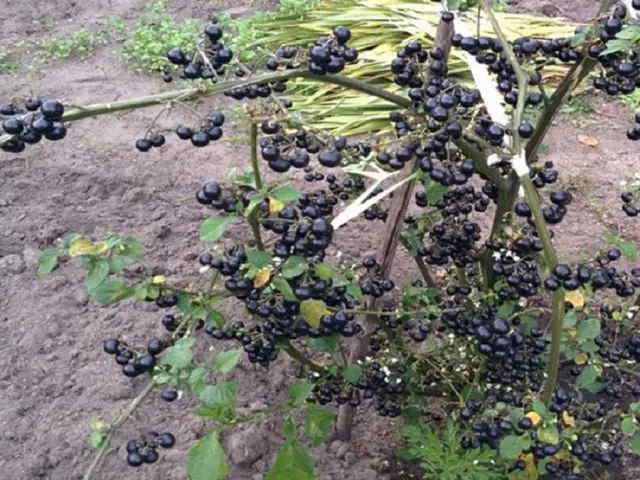
Features of growing sunberry berries
The plant has a powerful spreading bush, reaching a height of 1,5 m. Its stem is thick, faceted. Due to the similarity of fruits, sunberries are called garden blueberries. The culture is resistant to cold, can tolerate small frosts. The inflorescences of the plant are small, similar to pepper flowers. The size of the fruit is comparable to a cherry, there are up to 15 pieces in the brush.
Grow berries with seeds. Adult plants can be obtained as a result of self-seeding, but their germination is low, and the growing season is long, so the best option is to grow sunberries from seeds through seedlings.
How to grow sunberries from seeds
Sunberry, or garden nightshade, as it is also called, does not have a variety of varieties; to obtain seeds, it is better to contact a specialized store or friends who already have a novelty in their area and can share the seeds. Growing sunberry (garden nightshade) is a simple process. This fairly fast growing annual produces a large harvest of berries already at the end of the season. But sowing seeds in open ground is undesirable, since the temperate climate and the long growing season may not allow the sunberry berries to ripen before the onset of frost. Growing with seedlings is the only sure way to guaranteed a crop.
When to sow sunberries for seedlings
The timing of sowing sunberries for seedlings depends on the climatic conditions of a particular region. For the Moscow region, the period from mid-February to mid-March can be considered optimal for growing seedlings. It must be remembered that seedlings are planted in open ground after the threat of return frosts has passed. By this time, young plants will develop and get stronger. Seedlings must have at least 6 true leaves.
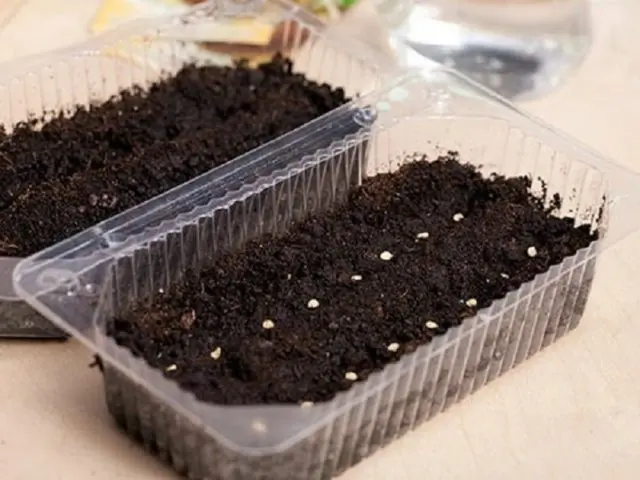
Preparation of soil and planting containers
For planting sunberry seeds, you need to prepare containers. In this capacity, you can use boxes, containers, plastic cassettes. Regardless of the choice, they must have drainage holes. If there are none or their size is small, then excess moisture will accumulate during cultivation, which will lead to rotting of the roots. The optimal hole size is 3 mm. Through them, not only the outflow of excess moisture is carried out, but oxygen also penetrates into the soil to the roots. It is worth installing a pallet with expanded clay under the containers so that water does not flood the window sill.
Containers that have been used many times for growing seedlings are capable of accumulating pathogenic microflora. Wooden containers should be treated with fungicidal preparations, plastic ones should be washed with hot water or a weak solution of potassium permanganate. Sunberry tolerates a pick well, so it does not matter which containers are used – general or separate.
Sunberry is not demanding on the composition of the soil, but peat should not be used for growing seedlings, since the culture does not tolerate acidic soil. Sunberry seeds are sown in a light substrate, with a neutral environment. For these purposes, you can use a universal soil mixture for seedlings. Drainage is laid at the bottom of the prepared container and soil is poured.
Seed preparation
Sunberry seeds have poor germination, so before growing berries, you need to prepare for sowing:
- Disinfect in a pink solution of potassium permanganate for 20 minutes. to protect against fungal infections.
- Rinse.
- Scarifying sunberry seeds – put in a jar of sand and shake several times to break the dense shell and facilitate germination.
- Place on damp gauze until swollen, keeping an eye on the humidity.
Seeds are ready for sowing in 5 days.
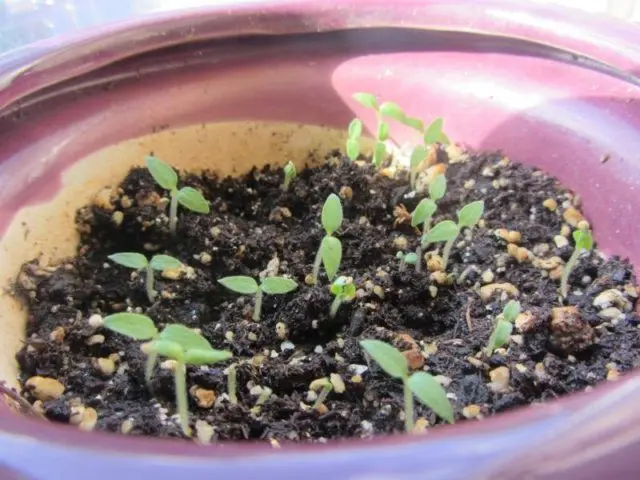
Planting sunberry for seedlings
When growing sunberries from seeds at home in seedlings, you must follow certain instructions:
- Prepare boxes with a drainage expanded clay layer and a nutrient substrate poured onto it.
- Sow the seeds of sunberry berries, placing them at a distance of 4 cm from each other, planting them to a depth of 5 mm.
- Cover with glass or polyethylene film to create an optimal microclimate for growing seedlings.
- Transfer the containers to a warm place with a temperature of 25 ⁰С and diffused light until the seeds germinate.
- Periodically, it is necessary to moisten the soil to prevent it from drying out.
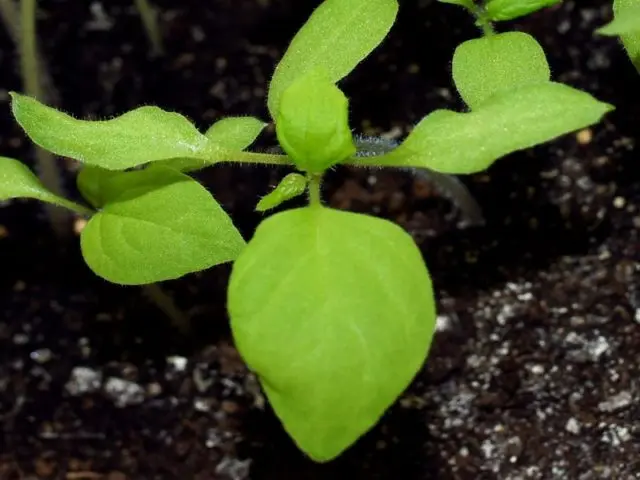
Seed care
Once the sunberry berries have emerged, cover should be removed from boxes and containers. Seedlings are unpretentious in cultivation, not requiring special care. Twice a day it must be sprayed with warm water. As the seedlings grow, they switch to watering under the root. At the same time, the soil must not be allowed to dry out. During short daylight hours, plants require additional lighting, as they are very sensitive to lack of lighting. Periodically, it is worth turning the pots with seedlings of sunberry berries so that it does not overtighten and form one-sided. Seedlings can be fed with special mineral fertilizers for seedlings. As soon as the third sheet is formed, a pick is carried out, if necessary. For further planting and cultivation of sunberry, or blueberry forte, in open ground, seedlings must be hardened. To this end, for two weeks they are taken out to the balcony, veranda, gradually extending the time spent in the fresh air.
How to plant sunberry outdoors
Seedlings after germination develop quite quickly and in a month reach a height of 30 cm. After the threat of frost has passed, they can be transferred for further cultivation in open ground. Even if the foliage is somewhat yellowed, after planting, the sunberry berry seedling will quickly gain strength and develop. Plants should be placed in pre-prepared holes, adding the necessary soil substrate and fertilizer there.
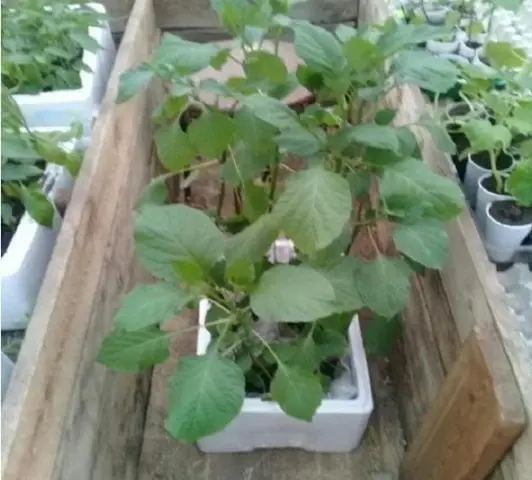
Terms of planting
Planting dates depend on the climatic conditions of the growing region. After the soil warms up to 12 – 15 ⁰C and the threat of return frosts has passed, it is time to plant garden nightshade bushes. Sunberry cultivation in the Moscow region in the open field begins from the end of May to the beginning of June. You can plant in a greenhouse a couple of weeks earlier. If there are temporary shelters that can help protect plants from short-term drops in temperature, seedlings can be determined for a permanent place 10 days earlier.
Site preparation
To get a bountiful harvest of berries, you need to choose the right site for growing sunberries. The plant prefers well-lit, open, sun-warmed places. The area must be protected from drafts and strong winds. It is recommended to grow sunberries, or garden nightshade, after cucumbers, zucchini. If the predecessors were peppers, potatoes or tomatoes, such a site should be discarded. Otherwise, the plants will feel bad, bloom weakly, dry out. The site must be dug up to the depth of a spade bayonet, to make ridges. The soil should be loose, light.
How to plant black nightshade sunberry
The growing area is made even, after which holes are prepared on it. Their size should correspond to the volume of the sunberry root system, taking into account the earthy coma. After planting, the berries grow, so the holes are made at a distance of 1 m and 80 cm between rows. With their closer location, the bushes will thicken and interfere with each other. Gardeners recommend placing sand or fine gravel on the bottom to perform the drainage function, as well as adding humus. Immediately before planting, seedlings of sunberry berries are watered abundantly so that they can be painlessly removed from the container and placed in the hole. The root system is covered with soil, tamped a little. Young plants are watered again and mulched near the trunk with rotted manure.
sunberry care
Sunberry is not capricious. Culture is not difficult. After planting, regular moistening, loosening of the soil, and hilling are necessary. Mulching the soil helps to retain moisture, protect the plant from weeds. Three times throughout the season, the bushes are fed with mineral fertilizers or mullein infusion. At the beginning of summer, the sunberry begins to bloom and continues until the very frost. Pasynkovanie bushes are not required. It is believed that growing garden nightshade is no more difficult than growing potatoes.
Watering and feeding
Sunberry is a drought-resistant berry that does not need abundant watering. But it is necessary to ensure that the soil does not dry out. Irrigation is carried out early in the morning, at 6 o’clock, or in the evening, at 20 o’clock. For irrigation use warm (about 22 ⁰С), settled water. You should be guided by the top layer of soil: as soon as it is dry, moisturizing is necessary.
Gardeners believe that sunberry does not need special feeding. It can give a rich harvest of berries on ordinary soil. To guarantee the result of cultivation, it is worth carrying out a triple top dressing in the form of mullein infusion, the application of complex mineral fertilizers, garden herbal infusions.
Weeding and loosening
If the soil is dense and heavy, the sunberry bush does not develop well. The soil must be loose. For this purpose, weeding is carried out at least once every two weeks and the aisles are loosened. At first, after planting, they do this to a depth of 10 cm. Later, in order not to damage the roots, – up to 8 cm. They try to loosen heavy soil deeper, but only in places where the root system has not penetrated. Mulching helps to retain moisture and optimal temperature for growing.
After the growth of the bushes, loosening is carried out simultaneously with hilling. Thanks to him, additional roots are formed that contribute to the development of sunberries and accelerate the ripening of berries. Hilling can be replaced by adding humus.
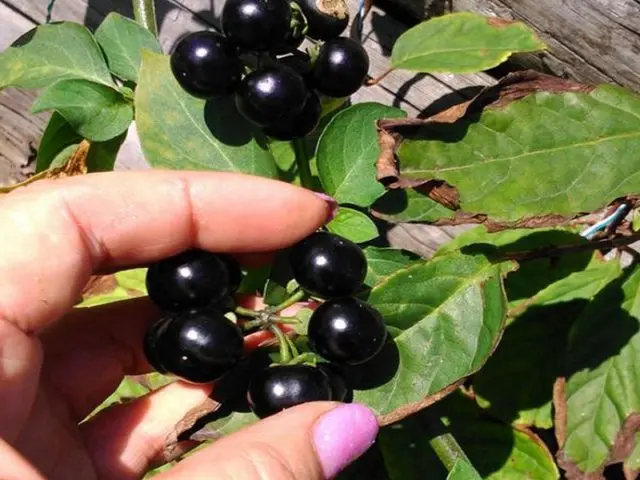
Protection against diseases and pests
The chemical composition of sunberries contains silver. The element serves as a shield against diseases and infections. The plant is not very susceptible to the main diseases of nightshade, but under adverse climatic conditions, cultivation is complicated by infection with infections.
Bacterial cancer
Leaf plates and sunberry branches are covered with brown cracks, ulcers. Even berries are affected by yellow spots, opening the entrance of infection to the seeds. The reason is unfavorable climatic conditions and bacteria. There are no means of combating the disease, the affected bushes are urgently removed and destroyed.

White spot
The main signs of the disease are the appearance of dirty white spots on leaves, fruits, branches. The cause of the pathology is excessive humidity of the environment at high temperatures.

brown spot
Manifested in the change in color of the lower leaves of the sunberry bush from green to olive and even dark brown. To combat spotting, Bordeaux liquid is used.
tip rot
The disease affects unripe berries. Their tops turn brown, the fruits fall prematurely. One of the reasons may be non-compliance with the moisture regime, drying out of the soil.
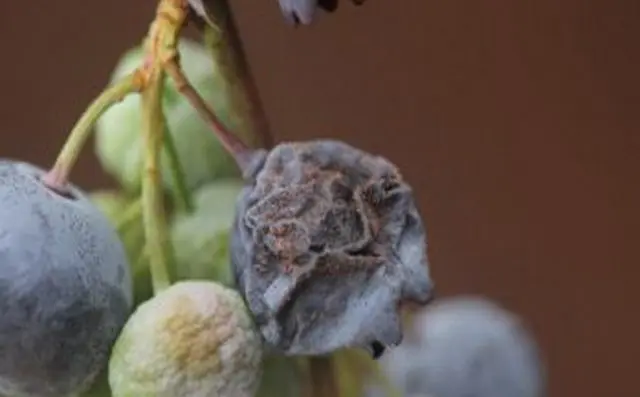
Sometimes the planting and cultivation of sunberry berries is overshadowed by the attack of a spider mite, cruciferous flea, Colorado potato beetle, aphid, midges. Gardeners do not recommend the use of insecticides, suggesting the use of folk remedies in pest control – infusion of onions, celandine, garlic, hot peppers, soap.
Other events
Flowering and formation of blueberries forte continues throughout the growing season, until the very frost. The formation of a sunberry bush is not required, with the exception of periods of berry setting and autumn. At this time, the buds are still appearing, but the upcoming frosts require stopping the vegetation of the plant so that all its forces are directed to the ripening of the already formed crop. Experts advise plucking stepchildren and removing all buds to speed up ripening.
Early frosts aren’t too bad for sunberry bushes, but you can cover them with non-woven fabric to be sure.
In order for the sunberry berries to be as large as possible, during the period of active flowering, some of the inflorescences are pinched. During cultivation, the plants do not require a garter, but the massive ripening of the berries makes the branches heavy, as a result of which they can sink to the ground. So that the crop does not die, it is worth making props for shoots weighted with large berries.
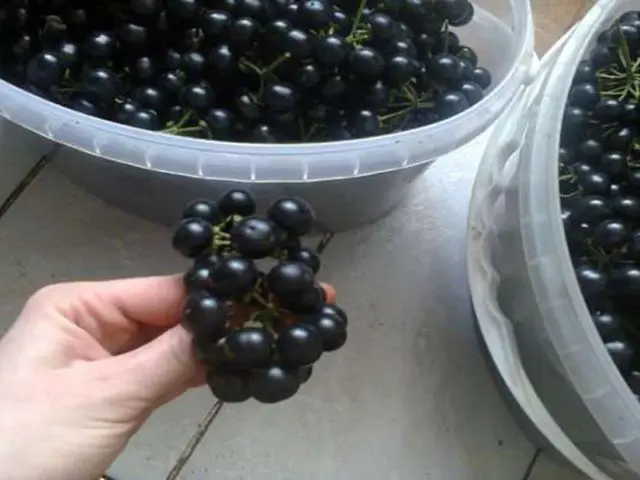
When to Harvest Sunberries
By the end of September, the sunberry harvest is ripe. Berries in a mature state become soft, rich black in color. They are not prone to shedding. In order for the berries to ripen, you can hang the bushes in a ventilated room. In a week the fruits will be ripe.
To improve the taste, you can leave the berries on the bush for the night when the temperature drops below zero. Their ripening is also possible after cultivation: it is required to place them on paper in a cool, dry place.
The taste of fresh berries is very specific. Before processing sunberries, they are advised to pour boiling water over them. After this procedure, the quality improves somewhat, the nightshade flavor disappears. Most of all, the berry is intended for processing – preparations of jam, jams, marmalade. To preserve useful properties, heat treatment should be minimal. Only in this case, the dessert serves as a remedy for hypertension, migraine, osteochondrosis, asthma, and epilepsy.
The juice obtained from the fruits of garden nightshade is a natural antiseptic that helps with sore throats. Sunberry leaves and branches have healing properties. However, as with any nightshade plant, their use must be done with great care.
How to prepare sunberry seeds
Sunberries are easy to propagate by self-sowing, but this method of growing is not very good, as seedlings appear very late.
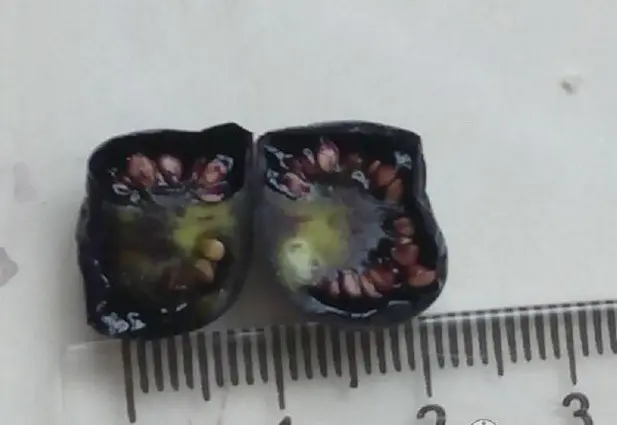
Seeds can be purchased from a specialty store to get a proven, pure variety.
It is possible to obtain seeds for next year on your own. For this purpose, it is necessary to take ripe berries, grind them, dilute them with water and pass the resulting slurry through a sieve or gauze. After that, rinse the seeds and dry well. Seed material for growing sunberries next year is ready.
Conclusion
Despite the benefits and properties of the plant, they have not yet begun to grow the sunberry berry in large quantities in Europe and Our Country. She is a rare visitor to garden plots, although interest in blueberry forte is growing.
With all the beneficial properties of the berry, one should be careful about its use and use in the treatment of pathologies, not forgetting to consult a doctor.
If you don’t like the taste of berries, then there is another reason for growing sunberries – decorating the site, because during the fruiting period they are very decorative.









